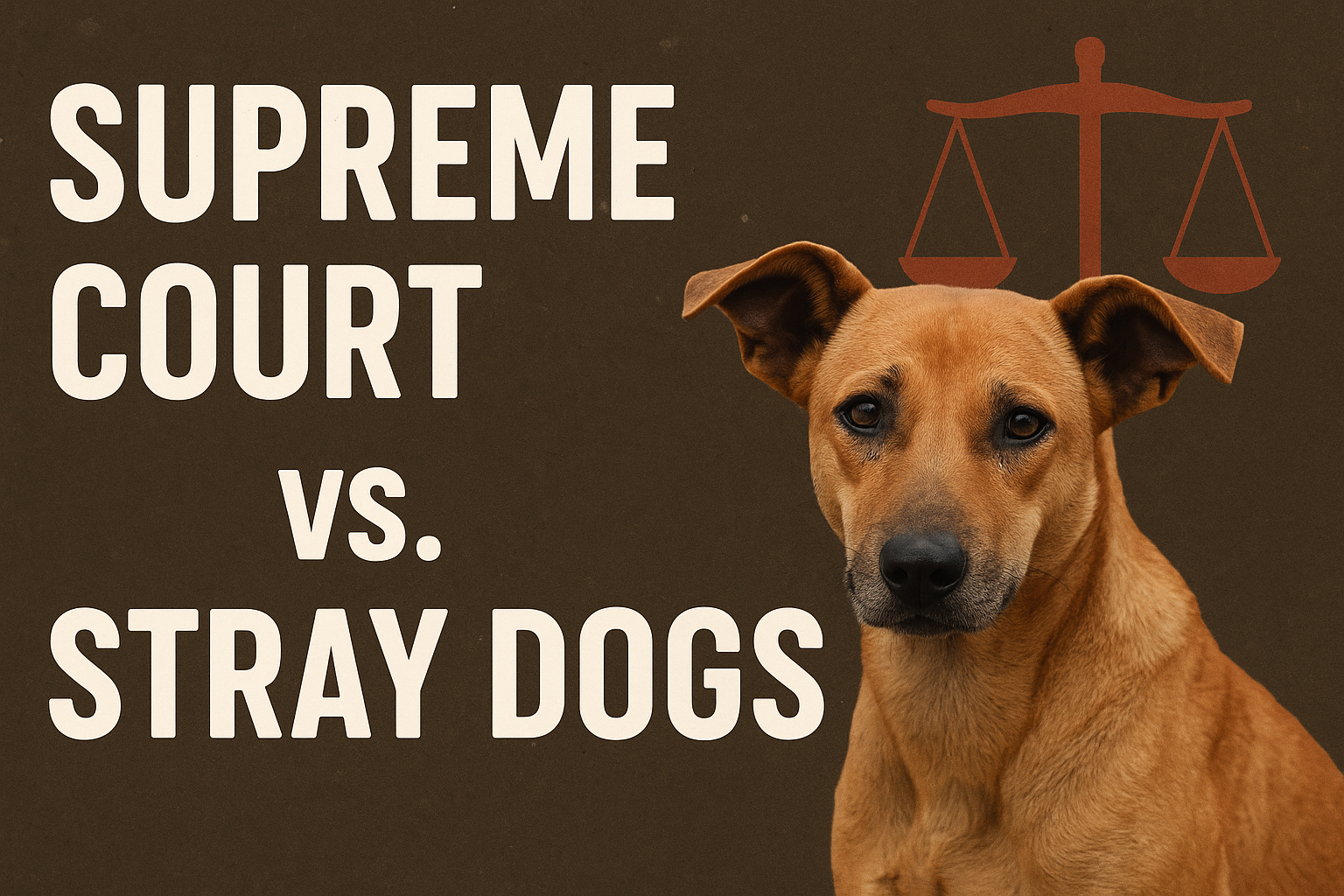If you’ve been following the news lately, you’d know that the Supreme Court has stepped into one of the most heated debates in India right now — stray dogs. And honestly, it all began with a tragedy: a six-year-old girl in Delhi died of rabies after being attacked by a dog. That single story made the court take suo moto action.
Now, here’s where it gets interesting. Within just two weeks, the Court passed two different orders, and both felt like two sides of the same coin.
First, the shockwave: 11th August 2025
The judges didn’t mince their words. They looked at the numbers — 37 lakh dog bites in India in 2024, more than 25,000 just in Delhi — and basically said, enough is enough.
Their point was simple: how can we even talk about freedom or dignity if people can’t walk the streets without fearing a dog attack? For them, this wasn’t just an animal issue; it was about Fundamental Rights under Article 21 — the right to life.
And who are the worst hit? Not the rich, not the gated communities. It’s the silent sufferers:
- The poor who can’t afford a single vaccine,
- The homeless who literally sleep on the streets alongside stray packs,
- The elderly and visually impaired who can’t defend themselves,
- And of course, kids who can’t even walk to school safely.
The Court ordered that all stray dogs in Delhi and NCR should be picked up, sterilized, vaccinated — but here’s the kicker — they must never be released back. Instead, they should stay in shelters and pounds.
For a moment, it felt like the Court was saying: let’s finally make our streets safe, like developed countries where you don’t see stray dogs at every corner.
But then came 22nd August 2025: a reality check
Barely two weeks later, another bench of the Supreme Court stepped in. Why? Because animal lovers, NGOs, and volunteers started raising alarms.
Their argument was blunt: “Look, the law — the Animal Birth Control Rules, 2023 — says dogs must be sterilized and released back to the same area. You can’t just order otherwise.”
And let’s be real: where would lakhs of dogs go if they were all picked up? Shelters don’t exist at that scale. The fear was that this would quietly turn into mass culling.
So the Court softened its stance. It said:
- Fine, release the dogs back after sterilization and vaccination, but with exceptions — no release for rabid or aggressive dogs.
- No more feeding dogs on random streets. From now, feeding zones will be set up in each ward.
- And if you really love dogs? Adopt them. Take them home. Care for them. Don’t just feed them in public and walk away.
Oh, and there was a tough love clause: NGOs and individuals filing petitions had to put their money where their mouth is — deposits ranging from ₹25,000 to ₹2 lakh to be used for stray dog infrastructure.
So, where does that leave us?
On one hand, we had a judgment that felt like it was protecting the voiceless humans — the poor, the kids, the street dwellers. On the other, we got a reminder that compassion and legality matter too.
And honestly, that’s the heart of the debate, isn’t it?
- The privileged can lock their gates, call cabs, or get private healthcare.
- But the silent sufferers? They face the dogs daily, and their pain often goes unheard.
The Supreme Court is clearly trying to balance both sides — safety of citizens and dignity of animals — but the real test will be implementation. Can cities actually build shelters, regulate feeding, and still make streets safer? Or will this turn into another half-done policy buried in files?
Final thought
If you ask me, this isn’t just about stray dogs. It’s about what kind of society we want to be. Do we continue with the “sterilize and release” model even if bites keep rising? Or do we take a bold step and rethink the entire approach to make our streets safe for everyone?
The Court has opened the door. Now it’s on us — citizens, NGOs, governments — to decide which path to walk.
